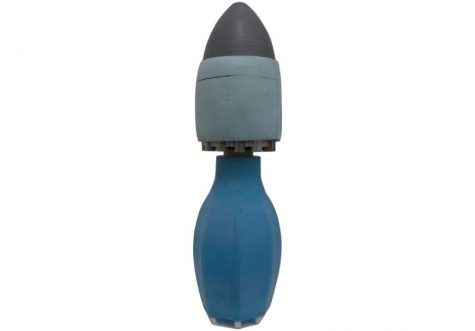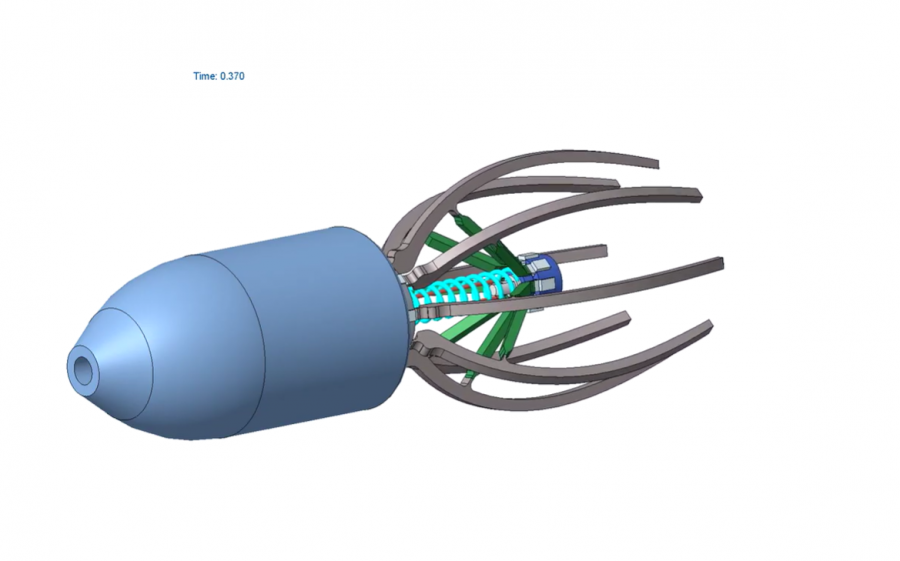Is It A Squid? No It’s A Robot!
Scientists have gone far in terms of robotics and underwater research, but the University of Southampton and the University of Edinburgh took inspiration from both and created a robot that swims like a squid. Squid and jellyfish are known as the “most efficient swimmers” and that proves to be no joke. Both jellyfish and squid use resonance to propel themselves through the water. Resonance is large vibrations that happen when applying a force at just the right frequency. Scientists found the right frequency and applied it to this robot, allowing it to create large water jets that shoot it through the water, all while using minimal energy. The mechanism used in this robot is actually pretty simple, it’s made of a rubber membrane encapsulating eight flexible 3D-printed ribs that together form a “propulsive bell”. The top half of the robot has a little piston that repeatedly taps the bell, causing it to expand and shrink back. When set to the right frequency, it mimics the way a squid might swim and moves at one body length per second. According to the latest tests, this robot is ten to fifty times more efficient than most small propeller-powered underwater vehicles. This, combined with its soft and malleable exterior, makes it ideal for working in sensitive environments like coral reefs, swimmer-clogged waters, and archeological sites.

A Master’s student in Naval Architecture at the University of Southampton named Thierry Bujard designed and built this robot in mere months. He said, “Previous attempts to propel underwater robots with jetting systems have involved pushing water through a rigid tube but we wanted to take it further so we brought in elasticity and resonance to mimic biology. I was really surprised by the results, I was confident that the design would work but the efficiency of the robot was much greater than I expected.” The Associate Professor in the University’s School of Engineering and supervisor of the project added, “The great thing about using resonance is that we can achieve large vibrations of the propulsive bell with a very small amount of power; we just need to poke it out of shape and let the elasticity and inertia do the rest. This has allowed us to unlock the efficiency of propulsion used by sea creatures that use jets to swim. The last decade has seen a surge in research into flexible and biologically-inspired robots, such as Boston Dynamic’s ‘Big Dog’, because they can be much more versatile than standard industry robots. This research demonstrates that these concepts can also be applied to underwater robotics. There are still many challenges and exciting possibilities to explore with soft underwater robotic technologies. We are now looking to extend the concept behind this robot to a fully maneuverable and autonomous underwater vehicle capable of sensing and navigating its environment.” Overall, this robot is a significant advancement for underwater exploration and a stepping stone for future scientists seeking to explore the great blue ocean.
RELATED STORIES:
https://techxplore.com/news/2021-01-squid-inspired-robot-nature-
https://www.sciencedaily.com/releases/2021/01/210120151027.htm
https://www.southampton.ac.uk/news/2021/01/jellyfish-robot.page















